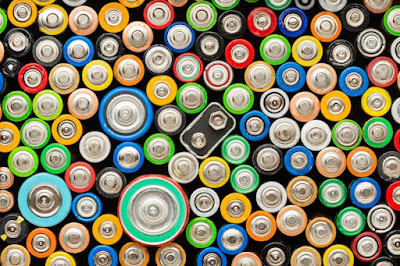Lithium-ion Batteries for Solar System - A Step-by-Step Guide
Lithium-ion Batteries for Solar System - A Step-by-Step Guide
If you are looking for a reliable and efficient way to store energy in your solar system, then you should consider using lithium-ion batteries. Lithium-ion batteries are known for their high energy density, long cycle life, and low self-discharge rate, making them ideal for use in solar systems. In this step-by-step guide, we will show you how to choose the right lithium-ion battery for your solar system and how to install and connect it to your system.
Step 1: Determine Your Energy Needs
- Calculate your daily energy consumption
- Determine the size of the battery bank you need
- Consider factors such as peak demand and weather conditions
By determining your energy needs, you will be able to choose the right size and capacity of lithium-ion battery for your solar system. This will ensure that your system is able to meet your energy needs and provide reliable power even during periods of high demand or inclement weather.
Step 2: Choose the Right Lithium-ion Battery
- Consider factors such as voltage, capacity, and cycle life
- Choose a reputable brand with a proven track record
- Compare prices and warranties
Choosing the right lithium-ion battery is crucial to the performance and longevity of your solar system. By considering factors such as voltage, capacity, and cycle life, you will be able to select a battery that meets your specific energy needs and can withstand the demands of your system. It is also important to choose a reputable brand with a proven track record, and to compare prices and warranties to ensure you are getting the best value for your money.
Step 3: Install the Battery
- Follow the manufacturer's instructions for installation
- Ensure the battery is properly grounded
- Check for any loose connections
Proper installation of the lithium-ion battery is essential for its safe and reliable operation. It is important to carefully follow the manufacturer's instructions for installation, and to ensure that the battery is properly grounded and that all connections are secure and tight. This will help prevent damage to the battery or your solar system, and ensure that it operates at peak efficiency.
Step 4: Connect the Battery to the Solar System
- Connect the battery to the charge controller
- Connect the charge controller to the solar panels
- Connect the battery to the inverter
Connecting the lithium-ion battery to your solar system is a critical step in getting your system up and running. It is important to connect the battery to the charge controller, which regulates the amount of charge going into the battery, and to connect the charge controller to the solar panels, which generate the energy that charges the battery. Finally, you should connect the battery to the inverter, which converts the stored energy into usable power for your home or business.
Step 5: Monitor Your System
- Monitor the battery voltage and charge level
- Check for any unusual behavior or performance issues
- Perform regular maintenance and cleaning
Once your lithium-ion battery is connected to your solar system, it is important to monitor its performance on an ongoing basis. This includes monitoring the battery voltage and charge level, as well as checking for any unusual behavior or performance issues that could indicate a problem with the battery or your system. Regular maintenance and cleaning can also help extend the life of your battery and ensure that it continues to operate at peak efficiency.
Benefits of Using Lithium-ion Batteries for Solar System
Using lithium-ion batteries for your solar system offers a number of benefits, including:
- High energy density, which means you can store more energy in a smaller space
- Long cycle life, which means the battery can be charged and discharged many times without losing its capacity
- Low self-discharge rate, which means the battery can hold its charge for a long time without needing to be recharged
- Lightweight and compact design, which makes them easy to install and transport
- Environmentally friendly, with fewer toxic materials and a lower carbon footprint than traditional lead-acid batteries
Conclusion
Using lithium-ion batteries for your solar system is a smart and efficient way to store energy and reduce your reliance on the grid. By following the step-by-step guide outlined above, you can choose the right lithium-ion battery for your system, install it properly, and monitor its performance to ensure it continues to operate at peak efficiency. With its high energy density, long cycle life, and low self-discharge rate, a lithium-ion battery can help you get the most out of your solar system and enjoy reliable, sustainable energy for years to come.

Post a Comment for "Lithium-ion Batteries for Solar System - A Step-by-Step Guide"